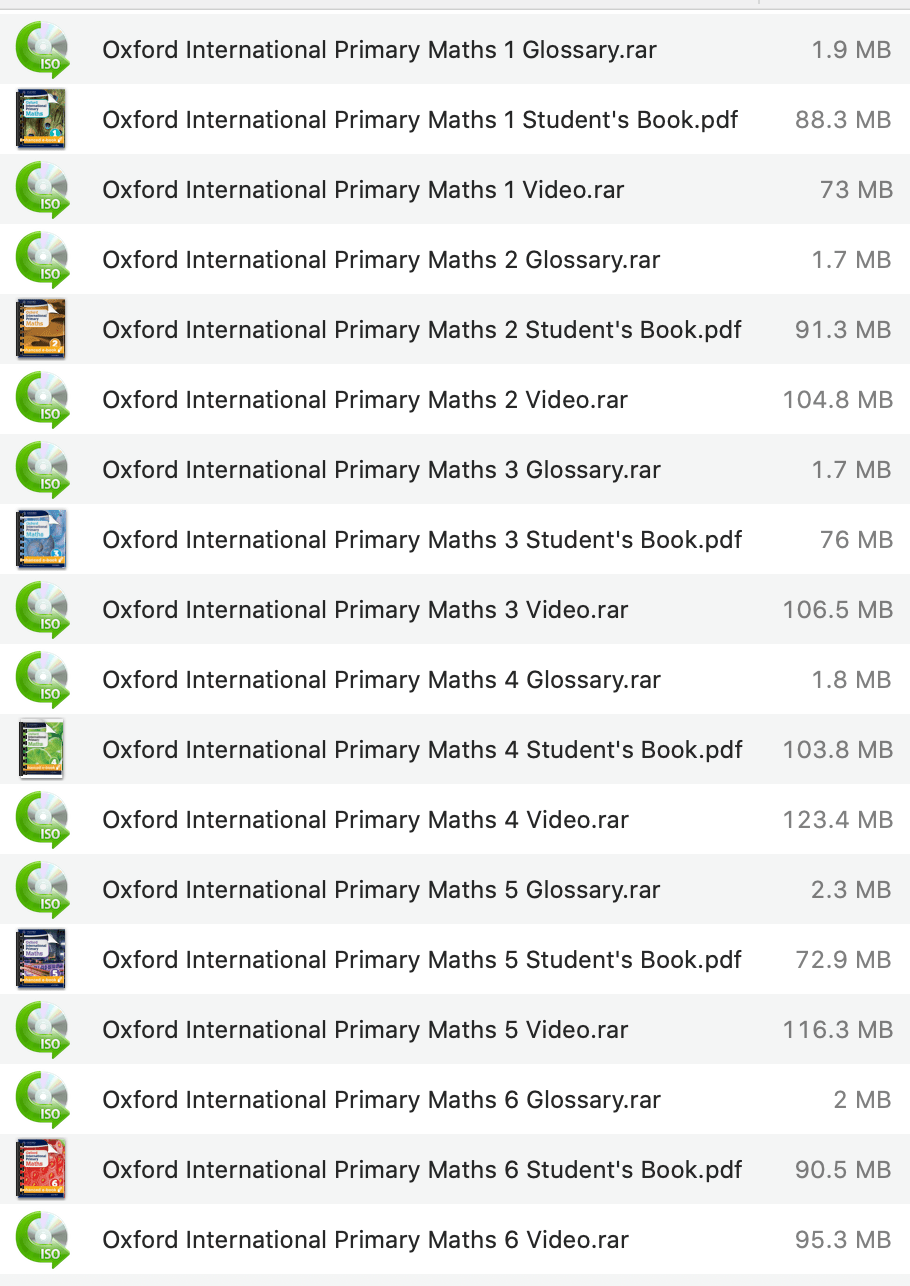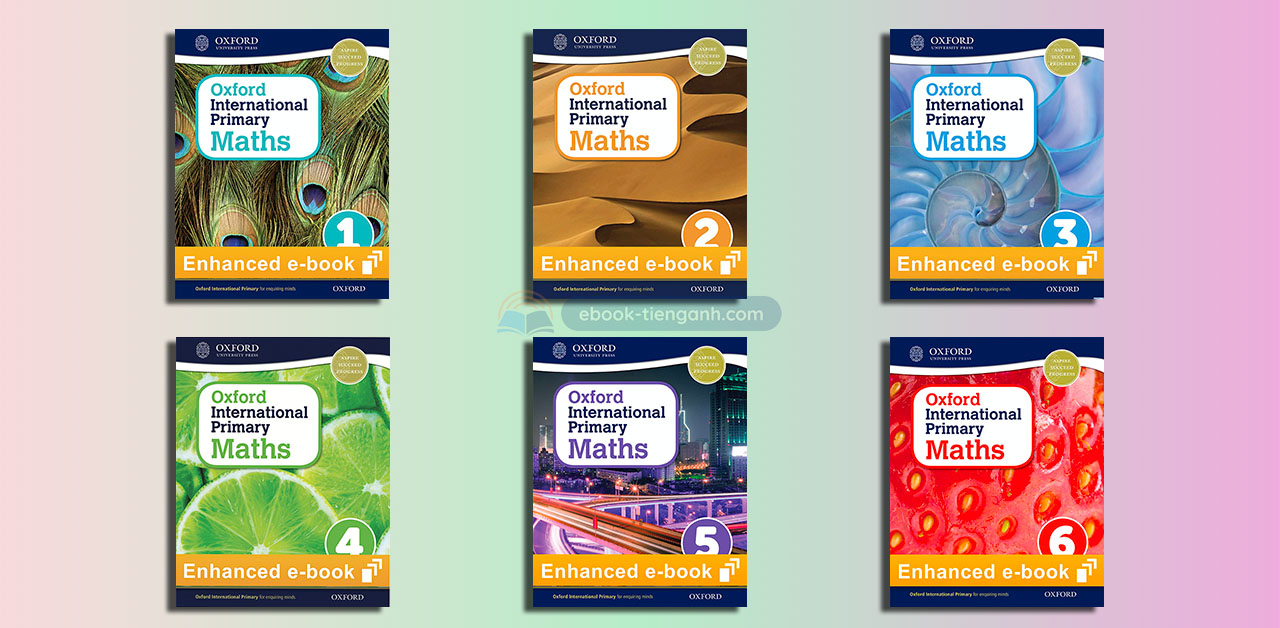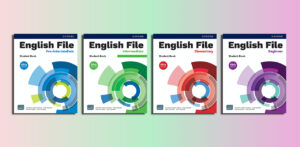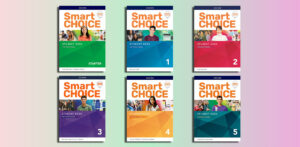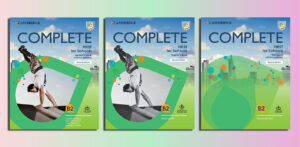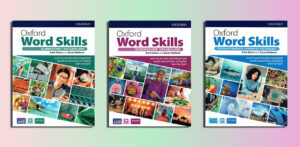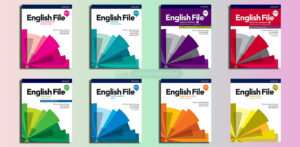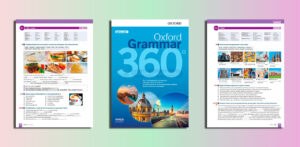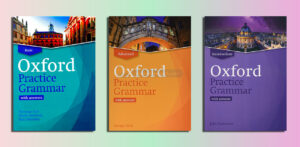Oxford International Primary Maths
Level 1
Oxford International Primary Maths 1 Glossary.rar
Oxford International Primary Maths 1 Student’s Book.pdf – Sample: Click
Oxford International Primary Maths 1 Video.rar
Level 2
Oxford International Primary Maths 2 Glossary.rar
Oxford International Primary Maths 2 Student’s Book.pdf – Sample: Click
Oxford International Primary Maths 2 Video.rar
Level 3
Oxford International Primary Maths 3 Glossary.rar
Oxford International Primary Maths 3 Student’s Book.pdf – Sample: Click
Oxford International Primary Maths 3 Video.rar
Level 4
Oxford International Primary Maths 4 Glossary.rar
Oxford International Primary Maths 4 Student’s Book.pdf – Sample: Click
Oxford International Primary Maths 4 Video.rar
Level 5
Oxford International Primary Maths 5 Glossary.rar
Oxford International Primary Maths 5 Student’s Book.pdf – Sample: Click
Oxford International Primary Maths 5 Video.rar
Level 6
Oxford International Primary Maths 6 Glossary.rar
Oxford International Primary Maths 6 Student’s Book.pdf – Sample: Click
Oxford International Primary Maths 6 Video.rar
Overview of the “Oxford International Primary Maths”
Contents
- 1 Overview of the “Oxford International Primary Maths”
- 2 Who is suitable for ‘Oxford International Primary Maths’?
- 3 The benefits of ‘Oxford International Primary Maths’
- 4 Effective teaching and learning strategies for ‘Oxford International Primary Maths’
- 5 Exploring the World of Numbers: An Introduction to Oxford International Primary Maths
- 6 Top 12 Primary Mathematics Programs: Excellent Alternatives to Oxford International Primary Maths
| ✅ Coursebook: | Oxford International Primary Maths |
| ✅ Publisher: | Oxford University Press |
| ✅ For: | Primary |
| ✅ Publication year: | 2016 |
“Oxford International Primary Maths” is a comprehensive mathematics curriculum designed for primary school students. It adheres to various international educational standards, making it suitable for a global audience. Here are some key aspects of this program:
- Grades Coverage: The curriculum typically covers grades 1 through 6, providing a solid foundation in mathematics for primary school students.
- Curriculum Structure: The program is structured to develop students’ mathematical understanding and skills in a progressive manner. It usually starts with basic numeracy and gradually introduces more complex mathematical concepts and operations.
- International Focus: As its name suggests, the curriculum is designed with an international audience in mind. This means it takes into consideration diverse educational standards and practices from around the world, ensuring its applicability in various educational settings.
- Content Areas: The curriculum typically includes key areas of mathematics such as number sense, arithmetic operations, geometry, measurement, data handling, and problem-solving.
- Teaching Approach: It often emphasizes conceptual understanding, encouraging students to explore mathematical concepts in depth. There is a balance between practical application, problem-solving, and theoretical understanding.
- Resources and Materials: The program usually comes with a range of resources for both students and teachers, including textbooks, workbooks, teacher’s guides, and sometimes digital resources. These materials are designed to be engaging and interactive to foster a love for mathematics.
- Assessment and Evaluation: The curriculum often includes various forms of assessments to track students’ progress. These might include regular quizzes, tests, and performance tasks that align with the learning objectives of the program.
- Alignment with International Standards: The curriculum is designed to align with international educational standards, ensuring that students are receiving an education that is comparable to global benchmarks.
- Professional Development for Teachers: There may also be resources and programs available for teacher training and professional development, ensuring that educators are well-equipped to deliver the curriculum effectively.
- Adaptability: The curriculum is often adaptable to local educational contexts, allowing schools to integrate it with their national standards and teaching practices.
This overview provides a general sense of what “Oxford International Primary Maths” encompasses. For specific details, especially regarding the latest editions or specific grade-level content, it would be best to consult the official Oxford University Press resources or educational material providers.
Who is suitable for ‘Oxford International Primary Maths’?
“Oxford International Primary Maths” is designed to be suitable for a broad range of students, particularly those in primary school settings. Here are some key groups who would find this curriculum appropriate:
- Primary School Students: The curriculum is specifically tailored for students in grades 1 through 6. It is suitable for children typically aged between 6 and 11 years old.
- International Students: Given its international focus, the curriculum is ideal for students in international schools or those following an international curriculum. It caters to diverse educational backgrounds and is sensitive to different cultural contexts.
- Students in Schools Adopting International Standards: Schools that are aligning their teaching with international educational standards would find this curriculum fitting. It aligns with global benchmarks in mathematics education.
- English-Language Learners: Since the material is in English, it is suitable for students who are learning in English, whether it is their first language or an additional language.
- Home-Schooling Families: Families who are home-schooling their children and looking for a structured, comprehensive math curriculum might find this program useful. It provides clear guidelines and resources that can be managed outside a traditional classroom setting.
- Educators Seeking a Comprehensive Math Program: Teachers and educators looking for a well-structured, progressive mathematics curriculum would benefit from this program. It provides extensive resources and guidance for teaching maths effectively.
- Students Needing a Solid Foundation in Mathematics: Any student who needs a strong foundational understanding of mathematics would benefit from this curriculum. It emphasizes conceptual understanding, problem-solving, and practical application, which are essential for mathematical proficiency.
- Schools Looking for Adaptable Curriculum: Schools that need a curriculum adaptable to their local context, while still maintaining international standards, would find this program suitable. It offers flexibility to integrate with national standards and educational practices.
Overall, “Oxford International Primary Maths” is well-suited for a diverse range of students and educational settings, particularly those looking for a comprehensive, internationally-minded mathematics education.
The benefits of ‘Oxford International Primary Maths’
“Oxford International Primary Maths” offers several benefits, particularly in providing a comprehensive and internationally-oriented approach to mathematics education for primary school students. Key benefits include:
- Global Perspective: The curriculum is designed with an international outlook, making it suitable for students from diverse backgrounds and education systems. This global perspective helps students understand and appreciate mathematics in a broader context.
- Structured Learning Pathway: The program provides a clear, progressive learning pathway from grades 1 through 6. This structured approach ensures that students build upon their knowledge and skills systematically.
- Comprehensive Coverage of Key Concepts: The curriculum covers all essential areas of primary mathematics, including number sense, arithmetic, geometry, measurement, data handling, and problem-solving, ensuring a well-rounded mathematical education.
- Focus on Conceptual Understanding: Emphasis is placed on deep understanding of mathematical concepts, not just procedural knowledge. This approach fosters critical thinking and problem-solving skills.
- Alignment with International Standards: The curriculum aligns with various international standards, ensuring that students receive an education that prepares them for both local and global academic requirements.
- Interactive and Engaging Materials: Resources like textbooks, workbooks, and potentially digital content are designed to be engaging and interactive, helping to maintain student interest and motivation in mathematics.
- Supports Differentiated Learning: The materials and teaching approach can accommodate different learning styles and abilities, allowing teachers to tailor instruction to meet the needs of all students.
- Preparation for Future Studies: By providing a solid foundation in primary mathematics, the program prepares students for more advanced studies in mathematics and related disciplines.
- Teacher Resources and Guidance: Teachers are supported with comprehensive guides and resources, making it easier to plan lessons, assess student progress, and provide effective instruction.
- Enhances Problem-Solving and Critical Thinking Skills: The curriculum often includes real-world problems and scenarios that enhance students’ problem-solving and critical-thinking skills.
- Cultivates a Positive Attitude towards Mathematics: By making math learning engaging and relevant, the program helps to cultivate a positive attitude towards the subject, which is crucial for long-term academic success in mathematics.
- Adaptable to Various Educational Contexts: The flexibility of the curriculum means it can be adapted to suit different school contexts, teaching approaches, and student needs.
These benefits make “Oxford International Primary Maths” a comprehensive choice for primary schools and educators aiming to provide high-quality, globally-relevant mathematics education.
Effective teaching and learning strategies for ‘Oxford International Primary Maths’
Effective teaching and learning strategies are crucial for maximizing the benefits of the “Oxford International Primary Maths” curriculum. Here are some strategies that can be particularly effective:
- Interactive Learning: Encourage hands-on activities and interactive learning. Using physical manipulatives, interactive whiteboards, or digital tools can make abstract mathematical concepts more concrete and understandable for young learners.
- Differentiated Instruction: Recognize that students have different learning styles and paces. Adapt teaching methods to cater to these differences, providing additional support or challenges as needed to ensure that all students can engage with the material effectively.
- Problem-Solving Approach: Emphasize problem-solving and critical thinking. Present students with real-world problems and scenarios that require them to apply mathematical concepts. This approach not only enhances understanding but also demonstrates the practical relevance of mathematics.
- Collaborative Learning: Promote group work and collaborative problem-solving activities. Working in pairs or small groups can encourage peer learning and enable students to explore and discuss mathematical ideas together.
- Use of Technology: Incorporate educational technology where appropriate. Online resources, educational apps, and software aligned with the curriculum can provide additional avenues for engagement and understanding.
- Regular Assessment and Feedback: Conduct regular assessments to monitor student progress. Provide timely and constructive feedback to help students understand their strengths and areas for improvement.
- Integration with Other Subjects: Show how mathematics connects to other subjects and everyday life. Integrating math with science, geography, and even art can make learning more engaging and relevant.
- Encouragement of Inquiry and Exploration: Foster a classroom environment where students feel comfortable asking questions and exploring concepts independently. Encourage curiosity and self-directed learning.
- Storytelling and Real-Life Contexts: Use storytelling or real-life contexts to explain mathematical concepts. This makes learning more relatable and can help students to better grasp abstract ideas.
- Visual Aids and Representations: Use charts, graphs, and other visual aids to represent mathematical concepts. Visual representations can help students to understand and remember concepts more effectively.
- Building Mathematical Vocabulary: Focus on building a strong mathematical vocabulary. Understanding the specific terms and language used in mathematics is crucial for students to follow instructions and express their own understanding.
- Cultivating a Positive Attitude: Encourage a positive attitude towards mathematics. Praise effort and persistence, and help students to view challenges as opportunities for learning and growth.
- Professional Development for Teachers: Encourage ongoing professional development for teachers. Staying updated with the latest teaching strategies and understanding the nuances of the curriculum can greatly enhance the effectiveness of instruction.
By implementing these strategies, teachers can effectively engage students with the “Oxford International Primary Maths” curriculum, fostering a deep and lasting understanding of mathematical concepts.
Exploring the World of Numbers: An Introduction to Oxford International Primary Maths
Unlocking the Potential of Young Minds
In the realm of primary education, mathematics stands as a cornerstone, crucial for the development of analytical and problem-solving skills in young learners. “Oxford International Primary Maths” (OIPM) emerges as a beacon in this educational landscape, offering a comprehensive and engaging approach to mathematics for students around the globe.
A Global Curriculum for a Diverse Audience
OIPM is not just a curriculum; it’s a journey through the universe of numbers, shapes, and logical reasoning. Designed for students in grades 1 through 6, it caters to the formative years of mathematical education. What sets OIPM apart is its international focus. The curriculum acknowledges the diversity of its audience, providing a global context to mathematical concepts. This approach prepares students to excel in a world that increasingly values international-mindedness and cross-cultural understanding.
Structured, Progressive Learning
The curriculum is meticulously structured, ensuring a smooth progression from simple numeracy to more complex mathematical concepts. Each grade builds upon the knowledge acquired in the previous one, ensuring a solid foundation of understanding. This scaffolding approach is key in developing not only mathematical skills but also a deep appreciation for the subject.
Engaging Young Minds
OIPM understands that engagement is crucial in the learning process. The curriculum is replete with interactive materials, such as colorful textbooks and practical workbooks. These resources are designed to captivate young minds, turning what could be mundane mathematical concepts into exciting adventures of the mind.
A Focus on Real-World Application
A standout feature of OIPM is its emphasis on the real-world application of mathematics. The curriculum bridges the gap between theoretical knowledge and practical usage, showing students how mathematics plays a vital role in everyday life. This relevance ensures that students not only learn but also understand the importance of what they are learning.
Developing Critical Skills
Beyond numbers and operations, OIPM is dedicated to honing critical thinking and problem-solving skills. Through a variety of problem-solving activities, students learn to approach challenges methodically and creatively. This skill set is invaluable, extending far beyond the mathematics classroom into all areas of life and future academic pursuits.
Teacher Support and Resources
Recognizing the pivotal role of educators, OIPM provides extensive resources for teachers. Comprehensive guides, lesson plans, and assessment tools are all part of the package, equipping teachers with everything they need to deliver the curriculum effectively. This support ensures that teachers can adapt the curriculum to fit the unique needs of their classrooms.
Adaptable and Inclusive
Flexibility is a core principle of OIPM. The curriculum can be adapted to align with local and national standards, making it an excellent choice for schools worldwide. This adaptability also extends to the varied learning styles and paces of students, ensuring that every child can benefit from the curriculum.
Conclusion: A Foundation for the Future
Oxford International Primary Maths is more than a curriculum; it’s a foundation for life-long learning in mathematics. By engaging students in a comprehensive, interactive, and globally-minded mathematical journey, OIPM not only educates but also inspires. It prepares young learners not just for their next grade, but for a world that increasingly relies on analytical thinking and problem-solving abilities. In the world of OIPM, mathematics is not just about numbers; it’s about opening doors to the future.
Top 12 Primary Mathematics Programs: Excellent Alternatives to Oxford International Primary Maths
If you’re looking for alternatives to the “Oxford International Primary Maths” series, which is designed to equip students with essential mathematical skills through a clear and engaging approach, there are several other series and resources that are highly regarded for primary mathematics education:
Cambridge Primary Mathematics – Developed by Cambridge, this series offers a curriculum framework of five stages, providing a strong foundation in primary mathematics. It integrates problem-solving and enrichment activities to foster a deeper understanding of math concepts.
Math in Focus: The Singapore Approach – Often referred to as Singapore Math, this series adapts the highly effective Singapore Math method for use in other countries. It emphasizes problem solving and in-depth understanding of essential math concepts.
Mathematics Mastery – An evidence-based program that aims to transform mathematics education with a deep, structured, and coherent curriculum. It is inspired by high-performing systems such as Singapore and Shanghai.
Caribbean Primary Mathematics – Published by Heinemann, this series is widely used in Caribbean schools and provides a practical approach to building math skills, designed to make mathematics understandable and enjoyable for primary students.
Stepping Stones by ORIGO Education – This comprehensive program offers a step-by-step approach to primary mathematics. It focuses on conceptual understanding, procedural fluency, and strategic competence, providing interactive and visual learning experiences.
Primary Mathematics by Marshall Cavendish – Another series based on the Singapore Math method, it focuses on problem-solving and critical thinking, emphasizing the development of students’ mathematical thinking and reasoning skills.
Abacus by Pearson – A comprehensive toolkit that combines books and digital resources to help children understand and apply math concepts. The Abacus program is designed to inspire a love of math and ensure mastery through a clear and consistent approach.
Collins International Primary Maths – This series offers a problem-solving approach to mathematics that encourages children to apply their math skills in a range of real-life scenarios. It’s structured to boost confidence and understanding in young learners.
Big Math for Little Kids – This early childhood mathematics program integrates mathematical concepts with everyday situations, helping young learners to start thinking mathematically from an early age.
Numicon – Known for its visual, concrete approach to teaching maths, Numicon uses patterns to represent each numeral. This method is particularly effective for children who benefit from seeing a physical representation of mathematical concepts.
Everyday Mathematics – Developed by the University of Chicago School Mathematics Project, this curriculum emphasizes real-world applications of mathematics with a focus on problem-solving, data analysis, and an understanding of mathematical concepts.
Jump Math – A Canadian program designed to foster understanding and love of math in children. Jump Math is based on the belief that all children can learn math, achieve success, and gain confidence in their abilities.
Each of these alternatives provides a robust educational framework for teaching primary mathematics, offering different methodologies and resources that can cater to diverse educational needs and learning environments.

